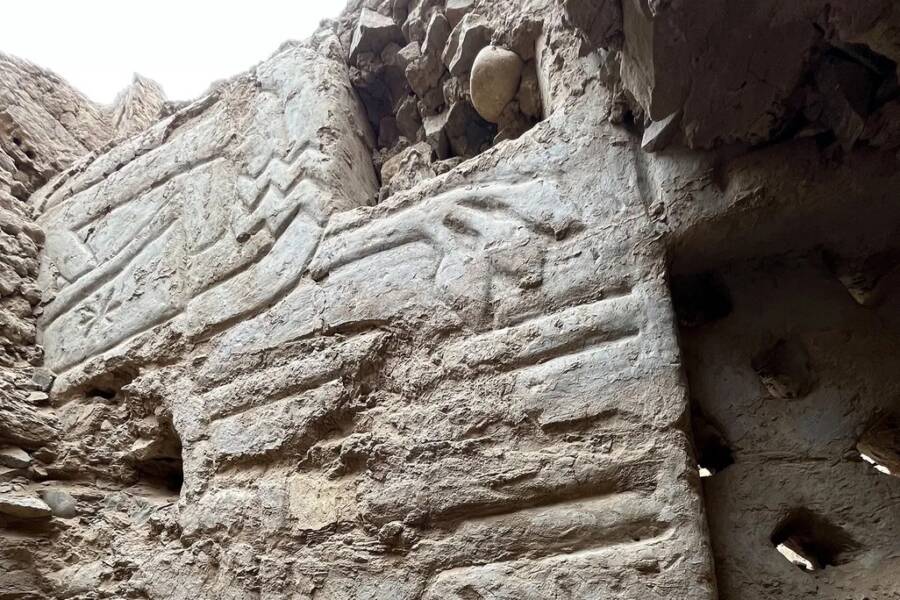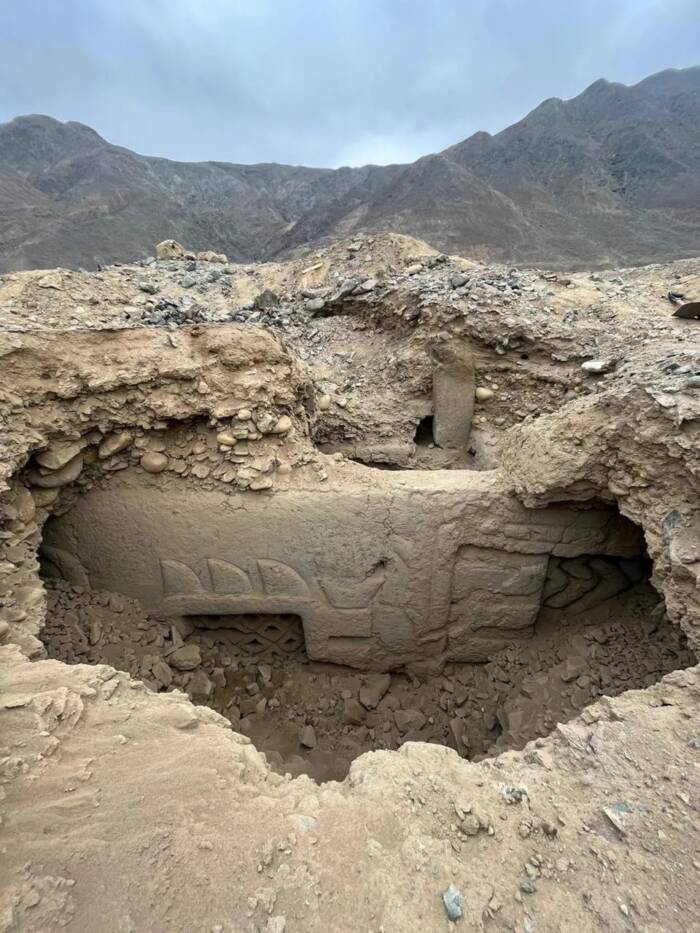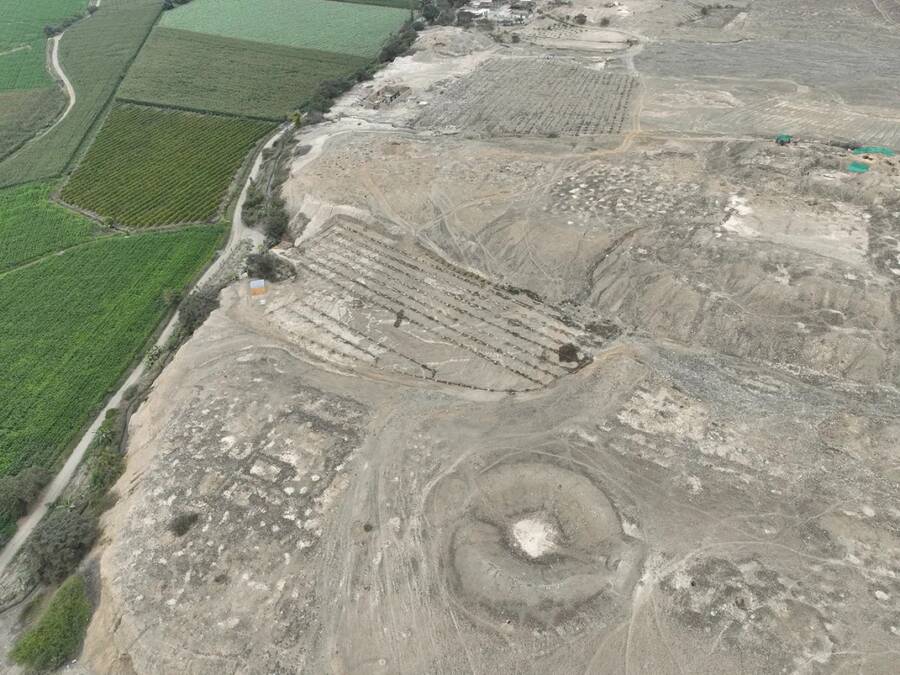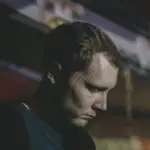Spanning 13 feet that once constituted the wall of a temple, the mural depicts stars, fish-like creatures, and fishing nets, some of which are decorated with yellow and blue pigments.

Pontifical Catholic University of PeruThe mural, dating back at least 3,000 years, that was discovered at Huaca Yolanda in Peru.
During excavations at Huaca Yolanda in the coastal Peruvian region of La Libertad, archaeologists uncovered a mural that’s between 3,000 and 4,000 years old. This three-dimensional rock art once adorned a temple wall and features designs of stars and fish unlike any recorded in the area before.
But while this discovery was both exciting and unexpected, it also comes at a precarious time for the Huaca Yolanda site. Looting and damage caused by the expansion of agricultural activity in the area are threatening the future of the site, leading experts to call for an urgent response to protect it.
The Discovery Of This Unique Ancient Mural In Northern Peru
According to a press release from the Pontifical Catholic University of Peru, an archaeological team led by Dr. Ana Cecilia Mauricio discovered the mural on July 7, 2025, and immediately noted that it was different from anything they had ever seen before.
“This mural at Huaca Yolanda is unique: nothing like it has ever been recorded in the area, neither in the Santa Valley nor in the Chao Valley,” Mauricio said.
Decorations on the mural included stars and what the university described as “fish-like beings” and fishing nets. These features, they say, make the mural “a piece of unexpected sophistication for its time.”
Mauricio and her team dated the mural to around 3,000 to 4,000 years ago (two millennia before the Inca Empire took root), based on the style of its design. This would place its origins in an era known as the Formative Period, when the first complex societies began to emerge along the northern coast of Peru.
The excavations are not yet complete, but Mauricio nevertheless remained confident about this age estimate.

Pontifical Catholic University of PeruThe mural features unique designs not seen elsewhere in Peru.
“Although more excavation is needed to fully determine the wall’s dimensions, there is a very good chance that not only the wall but the entire space where it is located remains intact,” Mauricio told Peru’s Andina News Agency.
“This will allow us to study the architecture, which is also very important, since it is rare in this part of the country to find the interior of a temple more than 3,000 years old and richly decorated.”
She added that the team did not expect to find such a unique piece of history, either. The discovery was made during planned excavations as part of the Early Ecodynamics Archaeological Program, which Mauricio has led since 2012, but finding this mural was a complete shock.
“We didn’t expect to find something of this magnitude,” Mauricio said. “This mural is a surprise, something we hadn’t anticipated.”
Part of the reason for this surprise was that the mural was most likely inaccessible in previous years. The excavation work was prompted by an increasing number of looters at the site, but as it turned out, holes left by those looters also enabled the team to find the mural. At the same time, the discovery only further emphasizes the need to address immediate conservation concerns about the site.
How Looting And Crops Are Threatening The Future Of Huaca Yolanda
Despite being a rich archaeological site, Huaca Yolanda faces significant risk from looters and, perhaps more pressingly, agricultural expansion, which is gradually encroaching on the site.
“Heavy machinery, such as tractors, used for farming is seriously damaging the huaca,” Mauricio said.
Unfortunately, without additional funding, there is little Mauricio and other archaeologists can do to help preserve Huaca Yolanda — especially after such an unexpected discovery.

Pontifical Catholic University of PeruAn aerial view of the Huaca Yolanda archaeological site near the northwestern coast of Peru.
“When it happens, specialists in mural conservation are needed, and that requires an additional budget to pay experts, purchase materials to stabilize the mural, and rebury it following the necessary technical guidelines under specific conditions, such as bringing in clean sand, desalinating it, and adding extra protective layers to the mural,” she said.
“All of this involves extra expenses, and we do not have that budget.”
Mauricio stressed the importance of preserving sites like this, both for scientific and cultural purposes. Preservation could also provide an economic benefit for local communities. However, without official boundaries, the site is essentially fair game for farmland expansion that could destroy its ancient structures.
“This is happening because the site does not have an official boundary set by the Ministry of Culture,” Mauricio said. “Even though we have been warning about this situation since the first day we found signs of damage, the issue still has not been addressed by the authorities.”
While she and her team continue their work at the site, Mauricio said that looting and invasive agriculture might stop — for the time being. After that, however, Huaca Yolanda’s future is up in the air.
After reading about the mural found at Huaca Yolanda and the conservation crisis at the site, learn about Peru’s mysterious Nazca Lines. Then, dive into the mystery of who really built Machu Picchu.





